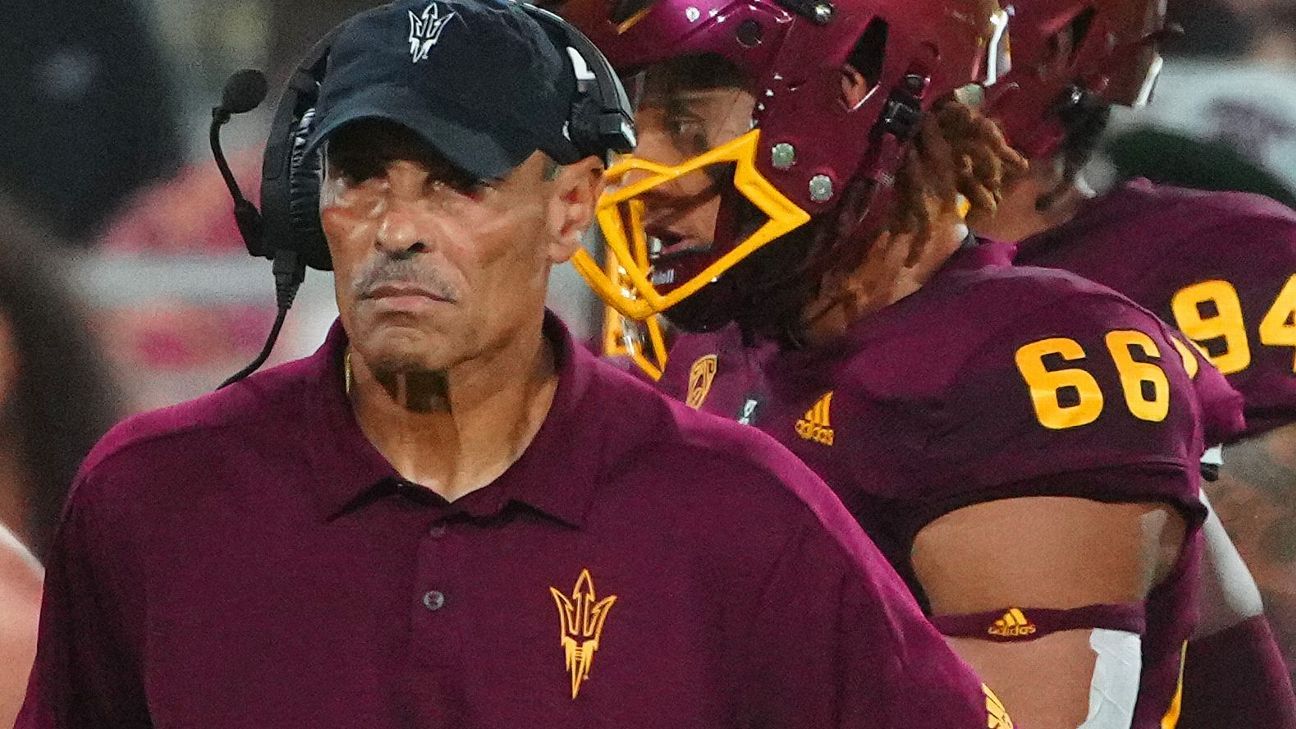Herm Edwards’ tenure as Arizona State‘s football coach began with bravado, featured dollops of optimism and ultimately ended on Sunday amid a spiral of off-field issues and bad football.
Under the dark cloud of a significant NCAA investigation and in the wake of both a staff roster exodus, Edwards’ time as coach ended like so many others in college football — with a humiliating loss.
Arizona State announced on Sunday that the school was making “a change in leadership” by “mutual agreement,” according to athletic director Ray Anderson. In reality, an embarrassing 30-21 loss to Eastern Michigan on Saturday — at the hands of EMU’s back-up quarterback — made Edwards’ inevitable departure a reality.
Edwards finishes his tenure at Arizona State (1-2) at 26-20 with one bowl win in five years. His time there will be remembered much more for the antics and issues off the field, as the NCAA investigation led to five full-time coaches leaving the staff, including both coordinators. The roster soon atrophied, as the program’s best quarterback, running back, defensive lineman, linebacker and two best wide receivers transferred out in the last year.
It took the inevitable losing that followed all of that fleeing for Arizona State to push out Edwards, 68, who is a former client of athletic director Anderson, the current athletic director who had worked as an agent earlier in his career. When Anderson hired him in 2017, Edwards hadn’t worked in college football since 1989.
The financial terms for Edwards’ departure were not disclosed. A school spokesman said the terms they are still to be determined.
Edwards’ hiring came with a bold press release that claimed he’d bring an NFL model — New Leadership Model — that Anderson said would allow ASU to “operate more innovatively and efficiently than we have in the past.”
Instead, Edwards finished with a worse winning percentage (56.5) than Todd Graham (59.0), who Anderson fired to hire Edwards, and never won more than eight games.
That status of Arizona State’s NCAA investigation will be the subject of much industry scrutiny, coaches try and parse potential sanctions as they evaluate the job. The Sun Devils have yet to receive a Notice of Allegations from the NCAA, as the NCAA investigation began in June of 2021 and doesn’t appear close to being older.
Edwards’ poor staff management led in part to the investigation, as it came after he empowered former defensive coordinator Antonio Pierce within the program. Pierce alienated staff members, as they alleged in a dossier of documents sent to the NCAA in May of 2021 that he helped create a culture where rule-breaking is rewarded.
The dossier of documents came together because the breaking of recruiting rules – specifically ignoring NCAA mandated dead periods during the COVID-19 pandemic — was so blatant that a group of ASU staffers kept a group text documenting them. The dossier came with pictures and time stamps that documented violations and it named 10 staff members and 13 different recruits. Sources have told ESPN that the investigation is considered significant by the NCAA.
The dossier came with a note that read: “I am writing this letter to inform you about recruiting violations that are occurring at Arizona State University in their Football department. My objective is…providing enough information to assure you if Arizona State football is looked into, there will be violations found.”
Edwards acted generally dismissive of the NCAA investigation, referring it early on as a “review.” Arizona State president Michael Crow and Anderson stood by Edwards, even as the talent level in the program tanked, recruiting stalled to the bottom of the Pac-12 and fan interest waned.
When the results on the field began to match the quality of the roster and staff, things changed. Eastern Michigan physically manhandled Arizona State, as a tailback named Samson Evans, who’d never rushed for more than 89 yards, ran for 258 as Eastern Michigan of the MAC dominated ASU in the trenches.
In less than 24 hours, Edwards and ASU parted ways. Anderson stated the objective of the change was “doing what is best for our current team, staff and university. I understand the frustrations out there. We must do better and that starts with our decision today.”
